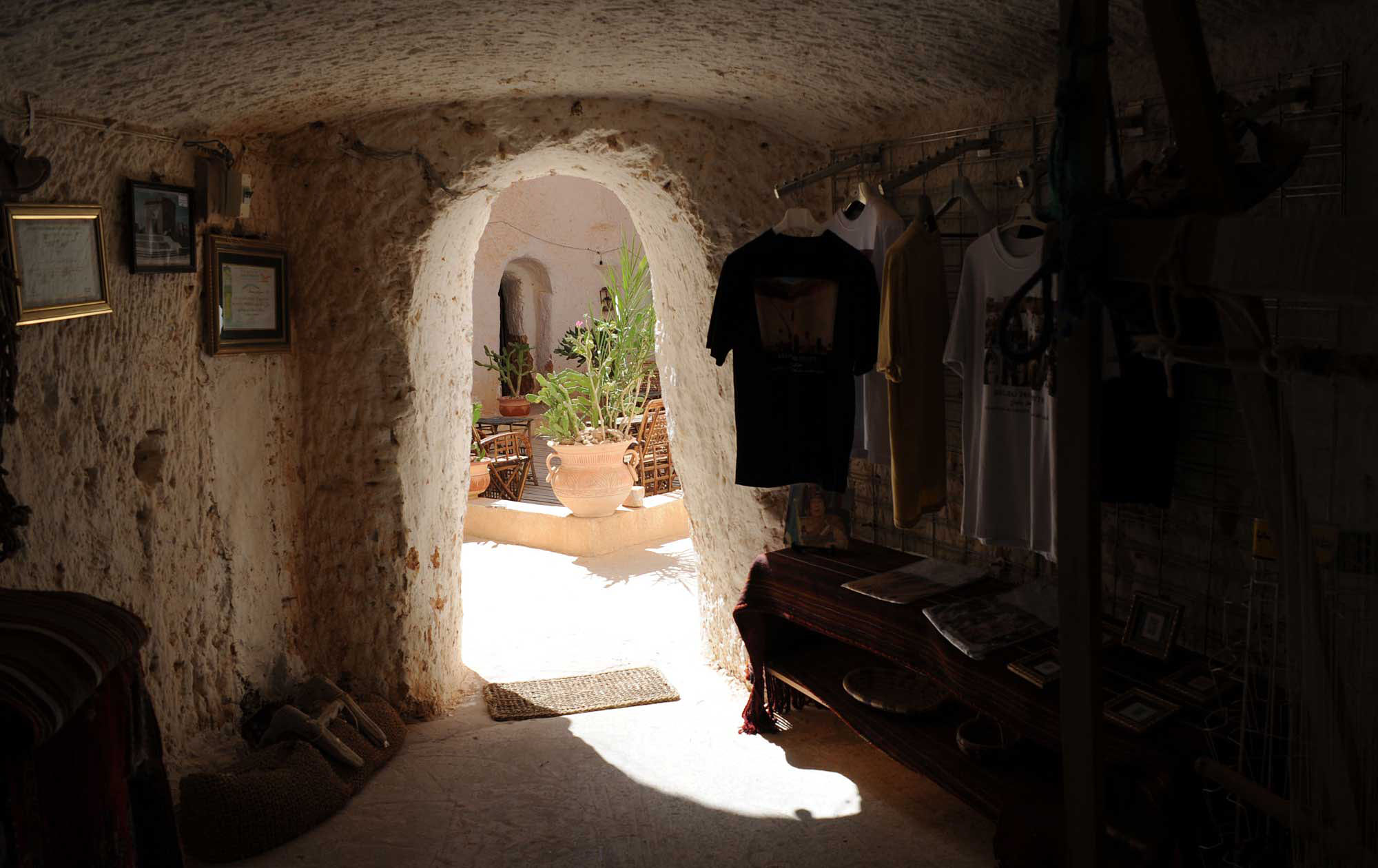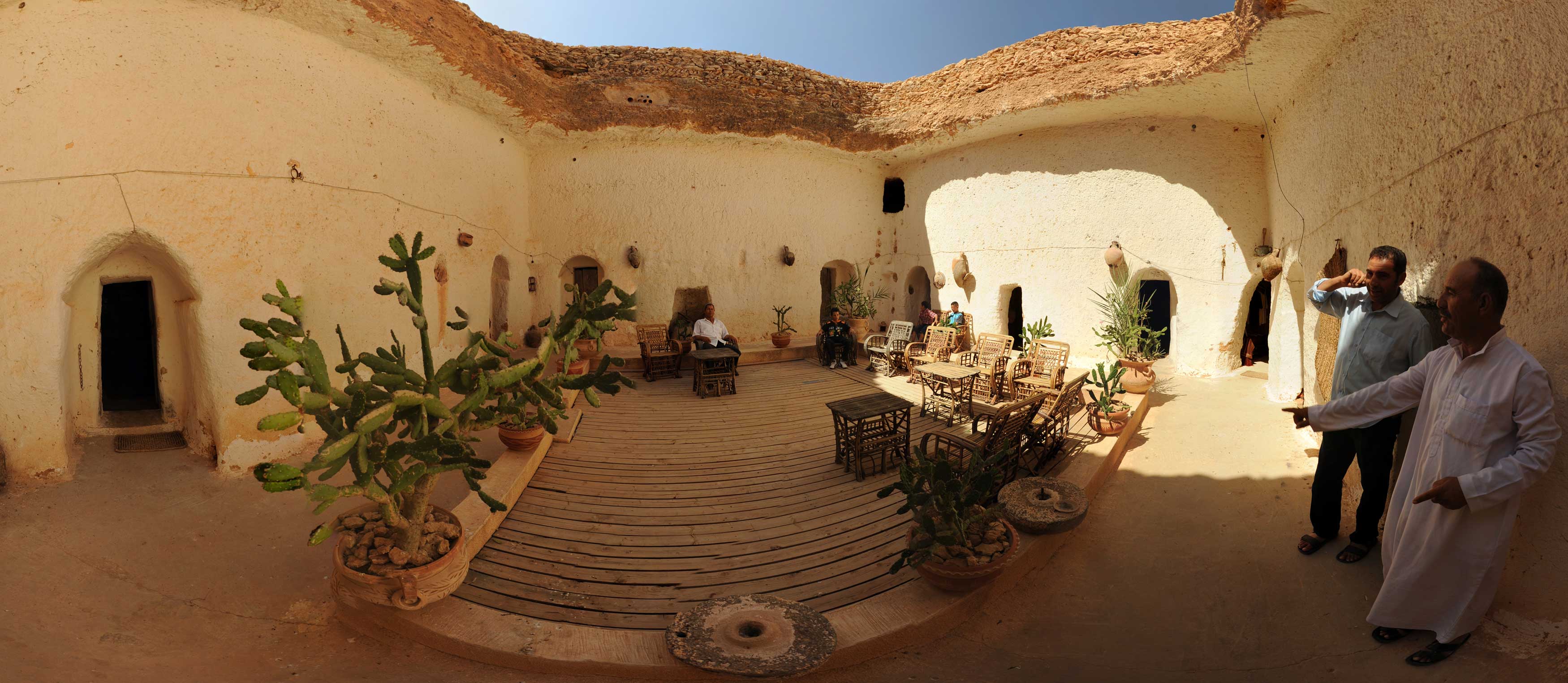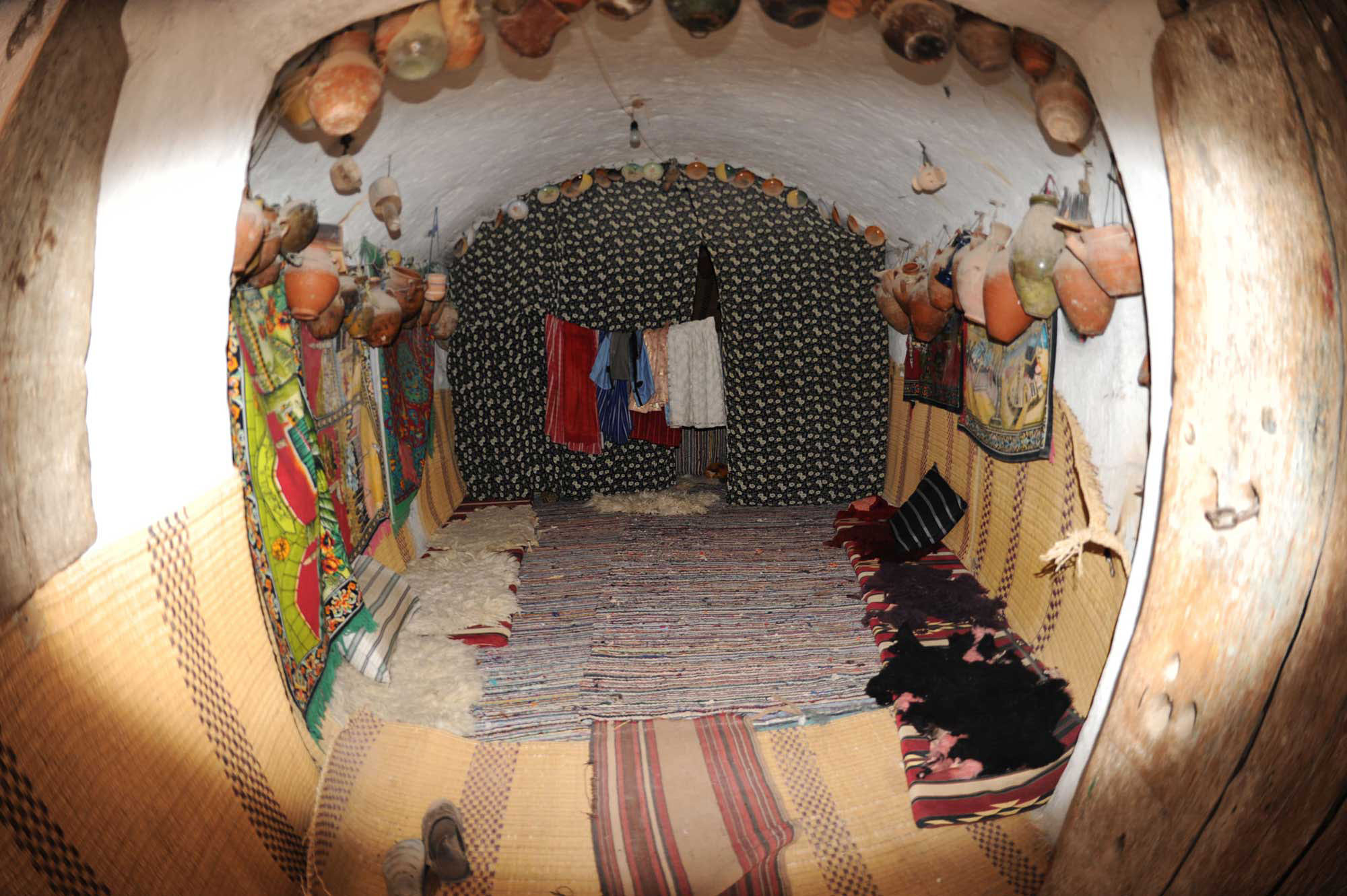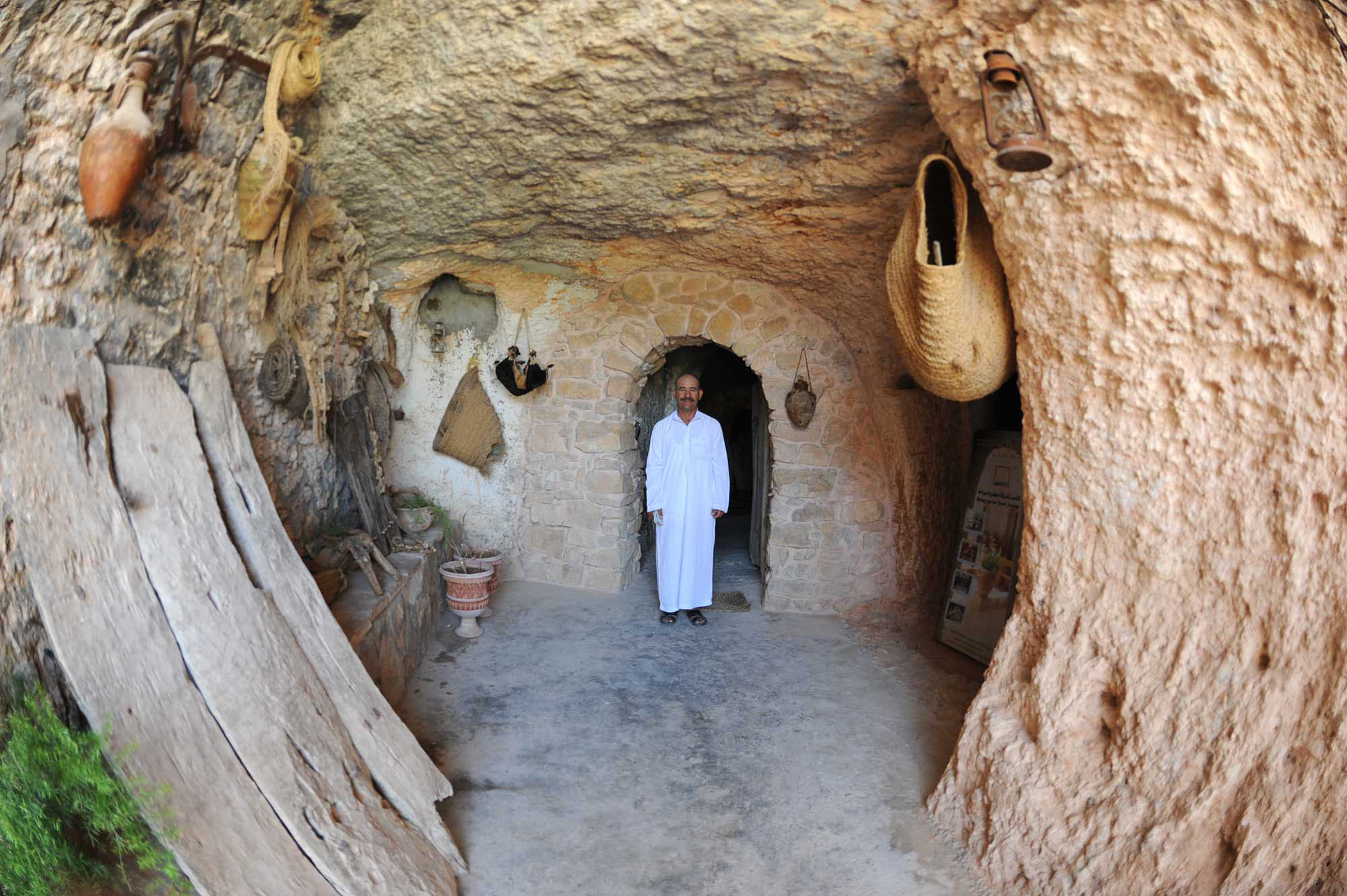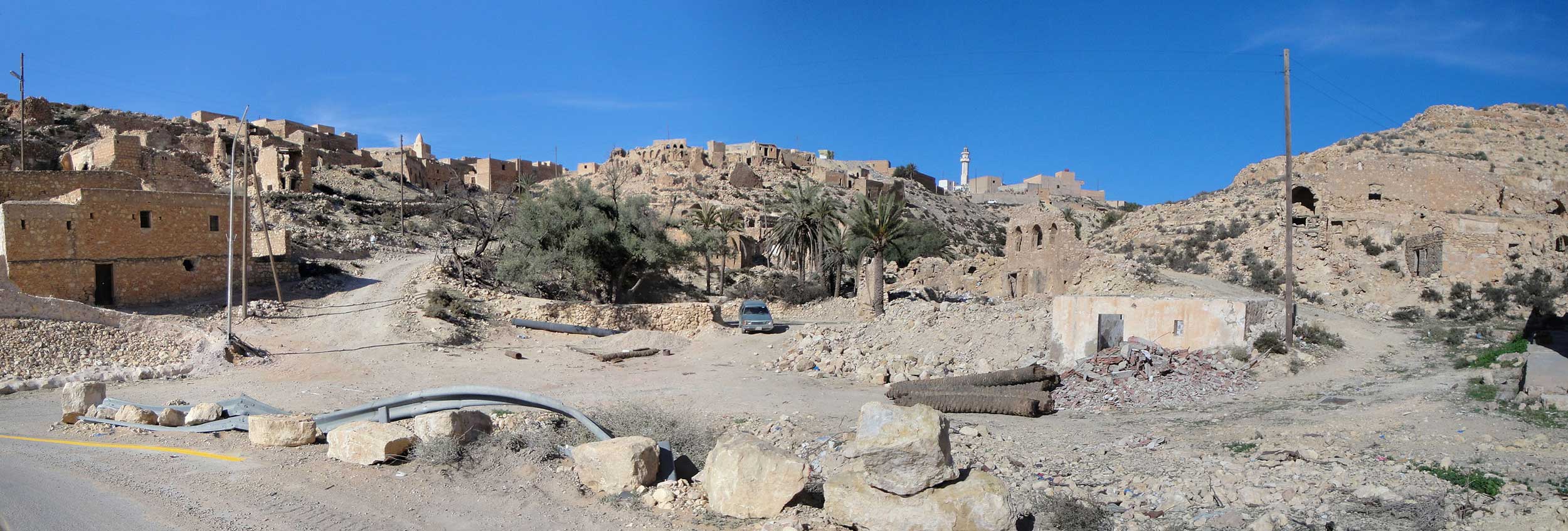The Southwestern Plateau Region
One of the many unusual geological features of this country is a plateau that juts up 2000 to 2700 vertical feet about a hundred and fifty kilometers south of the coastline, and covers nearly the entire western third of the country. A number of cities have been established along the top edge of this plateau and somehow eke out an existance in this nearly waterless, and (in summer) extremely hot region. The plateau can barely be seen on the horizon in this clear day photo taken on final approach for landing at the Tripoli airport.
After an hour's hard driving south from Tripoli along surprisingly good highway the plateau comes into clear view. The somewhat jagged edge gives the impression that it ends to the right, but actually it continues on for another 500 kilometers to the west. If we keep on straight on this highway we will end up in Gharyan. A highway to the west along the bottom of the plateau gives access to the series of cities along the top of the ridge via a number of junction roads that climb up the hill. In the series below we will see three typical ridge-top cities, Gharyan, Yafran, and Jadu.
Gharyan
Looking back from the top. The highway below is a straight shot to the north and Tripoli.
A local host gives some interesting local knowledge about the terrain, geology and history.
A look at Al Kwassa, a suburb of Garyhan. Nice homes. Surprisingly green now (May), as they do get a little rainfall in the winter. Because of the searingly hot temperatures in the long summer, the locals - these are Berbers from the desert - have made a practice of making their homes in deep excavations. Simply put, they dig a big hole down about 30 feet, and then tunnel sideways to make underground homes. With the advent of electricity and air conditoning, these buried homes are almost extinct.
This is the entrance to a Berber underground home.
Down through a sloped tunnel we reach the entrance to a central courtyard.
This is the common courtyard for an extended family group of six individual families. This home complex is nearly 350 years old. Even in the summer the temperature in the homes remains fairly constant at around 70 to 80 degrees F. The guy in the white robe on the right was actually born in the room through the doorway behind the pot and bush on the right.
This is where he was born. The room in front is the living room. There is a large bedroom behind the curtain.
He was very proud of his home, and a great host.
Gharyan is famous for its hand made, painted pottery. Shops like these are spread along the highway for about five kilometers. They offer many products ranging from outside plant pots to every type of indoor urns, pots, bowls, dishes and knic-knacs. All in beautiful colors and designs. Plastic flowers are extra.
Yafran
Located about a hundred kilometers west of Gharyan, Yafran is nearly a thousand years old.
The ancient section of the city is along the hilltop in the center left of the photo.
The ancient section of Yafran
Not exactly a busy metropolis, Yafran sprawls over the surrounding hills. This is the commercial center area.
Jadu
Another 50 kilometers west of Yafran, and a hard two and a half hours drive from Tripoli, Jadu is very similar. A sprawling, dry city.
This government office building is a rare exception to the norm. Built twenty years ago, it has not been used until just recently. As we begin our work to replace and upgrade the infrastructure of these western cities, we plan to assign some of our team to Jadu, which is well located to enable reaching these cities within a reasonable drive.
Return to Other Sights in Libya






